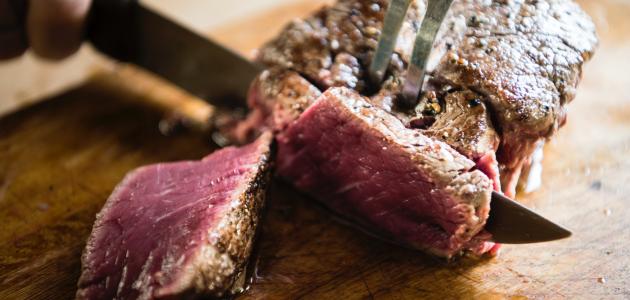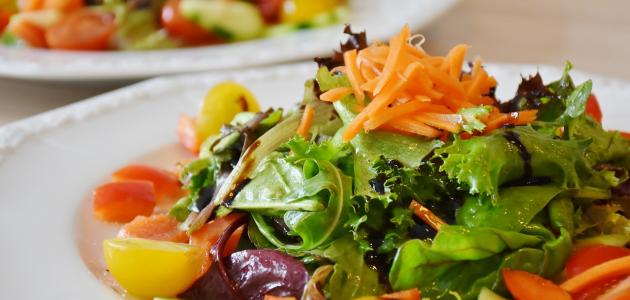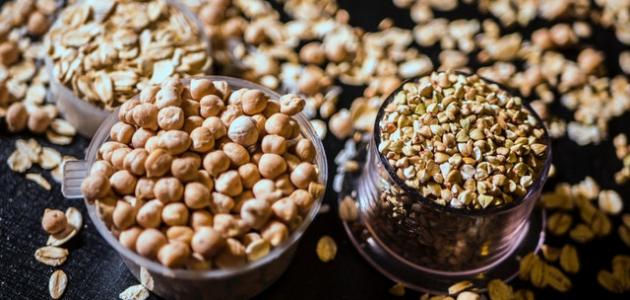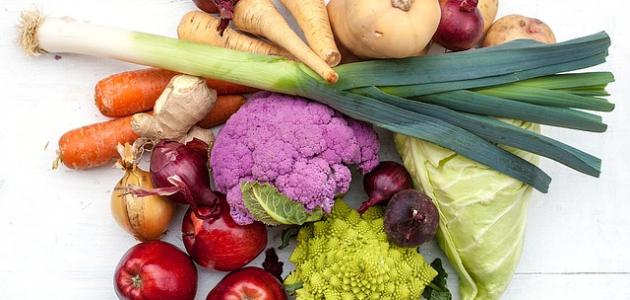Obesity and overweight
Obesity and overweight are defined as an abnormal increase in fat and its accumulation in the body, which negatively affects health. As they may increase the risk of many health problems, such as: Heart disease, high blood pressure, and type 30 diabetes. Obesity or overweight can be diagnosed using the measurement of the body mass index (in English: Body Mass Index). By dividing the weight in kilograms by the square of the height in meters, and if its value is equal to 25 or more, this indicates obesity, and if the value is equal to XNUMX or more, this indicates an increase in weight.
Diet for weight loss
The goal of losing weight or reducing obesity is to reach a healthy weight, and it does not have to be the same as the ideal weight. Weight loss must be simple, gradual, and over a long period, that is, by a percentage ranging between 5 to 10% of the weight when starting to follow the diet. It is worth noting that losing weight contributes to improving the body’s health. It may lower blood pressure and reduce the risk of diabetes and heart disease.
diet
There is no single diet that suits everyone due to differences in genes and lifestyle between individuals, and therefore it is not necessary for the diet suitable for one person to be suitable for another, as planning the appropriate diet depends on a group of environmental, personal, and psychological factors, including; Family medical history, genes or hereditary factor, race, age, gender, place of living, nature of work, religion, rate of physical activity, type of food eaten, average hours of sleep, extent of certain diseases, medications taken, and having an eating disorder (in English: eating). disorder), and the level of stress, so it is often preferable to visit a nutritionist to determine the appropriate diet, and the following is an explanation of the general points for following a diet that helps with slimming or reducing weight:
Read also:Benefits of cumin for weight loss- Visit a nutritionist: As we mentioned previously, there is no single diet suitable for everyone, and despite what is believed about the difficulty of consuming healthy foods; However, this is not necessarily true, and a nutritionist can determine a logical and appropriate diet that can be followed for life, in addition to some methods that help in planning meals and the patient choosing foods appropriate for his diet when shopping, and it also contributes to clarifying the health status of patients, And the effect of the foods they eat on it, and thus knowing the appropriate food options to improve them, and how to plan and prepare meals in simple, easy, and healthy ways to alleviate this health condition.
- Calorie count: All diets, regardless of their type, depend on reducing the amount of calories consumed so that the body burns fat to obtain energy. To know the amount of calories that must be reduced to lose weight, you must first calculate the body’s needs for them, then reduce them to a percentage that helps the body lose weight.
- For example; To lose approximately half a kilogram per week, the usual consumption of calories must be reduced by 500 calories per day, while if you plan to lose approximately one kilogram, the amount is 1000 calories per day, while reducing it by an amount exceeding that may be considered harmful to the body. In general, following diets Which contain a very low percentage of calories and should be under the supervision of a doctor.
- Distribution of calories among different food groups: There are two ways in which the calories consumed daily can be distributed: Either by reducing the quantities of food or the portion consumed, or by consuming low-calorie foods, and most nutritionists usually combine the use of the two methods, and it should be noted that it is necessary to know the necessary daily portions of each food group, and the portions are mentioned below. Recommended for a diet containing 1600 calories, each serving equals 28 grams:
| food group | Recommended amount for adults (1600 calories) | Quantity of one food serving |
|---|---|---|
| vegetables | Cobain |
|
| Fruit | a cup and a half |
|
| Grains and starches | 141.7 grams | Every 28 grams or serving of carbohydrates represents the following: Read also:Benefits of boiled parsley for slimming
|
| dairy | 3 Mugs |
|
| Proteins | 5 servings or about 142 grams |
|
- As for the fat group, it is preferable to consume the least amount of unsaturated fats possible.
- Example of a one-day diet: As we mentioned previously, there is no single diet that can be generalized, but here is the general form of a daily balanced diet that may be provided by a nutritionist. The following diet contains 1800 calories:
- Breakfast: It is as follows:
- Two slices of toast or a loaf of bread.
- A piece of low-fat cheese weighing 30 grams.
- ½ cup of milk.
- A tomato or cucumber.
- A teaspoon of olive oil.
- Snack: It represents one serving of fruits.
- Lunch: It is as follows:
- A cup of rice.
- Two teaspoons of vegetable oil.
- A cup of vegetable soup.
- A piece of skinless chicken weighing 10 grams.
- ½ cup of yogurt.
- Snack: It is as follows:
- Two pieces of biscuits.
- ¼ cup of milk with tea without added sugars.
- Dinner: which consists of the following:
- A small loaf of bread.
- Half a cup of beans or chickpeas.
- One cup of salad.
- ½ cup of yogurt.
- Two teaspoons of olive oil.
- Breakfast: It is as follows:
Physical activities
Although the body often loses weight due to reducing calorie consumption, most scientific evidence indicates the importance of combining a weight loss diet with regular exercise, as exercise is one of the important factors that contribute to maintaining good health and achieving The desired weight, as it increases the percentage of calories that the body uses to obtain energy, thus increasing the burning rate, and reducing the percentage of calories consumed with exercise, which contributes to weight loss.
Read also:How to lose excess weightMaintaining or losing weight depends on the level of physical activity that each individual needs, and here are some tips that can be followed for this:
- to maintain weight; It is recommended to do moderate-intensity aerobic exercise for 150 minutes, or high-intensity aerobic exercise for 75 minutes, or both throughout the week.
- To lose weight; Physical activity must be increased significantly unless you follow a healthy, low-calorie diet with exercise, as this requires less intense exercise. It should be noted that achieving a healthy weight requires combining this diet with exercise.
As for the difference between moderate-intensity and high-intensity exercises, it is as follows:
- Moderate intensity exercises: It is one in which the heartbeat can be heard accelerating when performed, but with the ability to speak at the same time. These exercises include: walking briskly and actively for 15 minutes, riding a bicycle at a normal speed, and playing with children with high activity.
- High-intensity exercises: Which is characterized by a greatly accelerated heartbeat, difficulty speaking, as well as difficulty breathing and increasing its speed at the same time. These exercises include: running, swimming, high-speed skating, football, basketball, and skipping rope.
Gradual lifestyle change
It is recommended to lose weight properly and maintain it for as long as possible by changing lifestyle and healthy habits permanently. The following steps help to start these changes:
- Make sure you are fully prepared to start a weight loss diet: It requires effort, time, and commitment, so you must ensure your desire to make radical changes in your diet and physical activity.
- Finding internal motivation: Following diet and exercise must come from an internal motivation, as there is no one who can force others to lose weight. Therefore, you can write a list of important things that help you focus and maintain the motivation to continue following them, in addition to following up with a social environment that supports this decision in positive ways without... Causing shame or embarrassment to the person who does it. However, if you want to keep the matter private, you can monitor the progress in losing weight personally by measuring the weight periodically, and monitoring the extent of adherence to the diet and exercise by recording them using modern technological means.
- Setting realistic goals: like; Do not expect to lose weight in excess of approximately half a kilogram to one kilogram per week by burning 500 to 1000 calories in excess of the amount of calories consumed daily, following a low-calorie diet, and exercising regularly, and in the event of suffering from a large amount of Excess weight that a person needs to lose should not be thought about its quantity all at once, but rather gradually. For example; If the excess weight is 30 kilograms, you should initially focus on losing the first 10 kilograms, and so on.
- Enjoy more healthy meals: This is done by adopting new healthy eating habits that stimulate weight loss, such as reducing the total number of calories consumed, but this does not necessarily mean not eating foods that taste delicious or are easy to prepare, for example; It is possible to consume plant foods that taste good and contribute to weight loss. Such as vegetables, fruits, and whole grains.
- Follow a healthy lifestyle in the long term: Consuming healthy nutritional foods and exercising must become a long-term lifestyle for successful weight loss, by evaluating the followed eating habits and daily routine, and limiting unhealthy habits that increase weight gain, in order to reach the goal and the desired healthy weight. with it.
It should be noted that there may be some setbacks, but this does not mean stopping continuing to follow the diet. Rather, it is important to resume and not postpone it, as following this diet is associated with a radical change in the entire lifestyle, and this matter requires some time to obtain the desired result. As we mentioned previously, if it is difficult for a person to implement these steps, it is necessary to resort to a nutritionist for gradual and permanent change in order to obtain satisfactory results.









